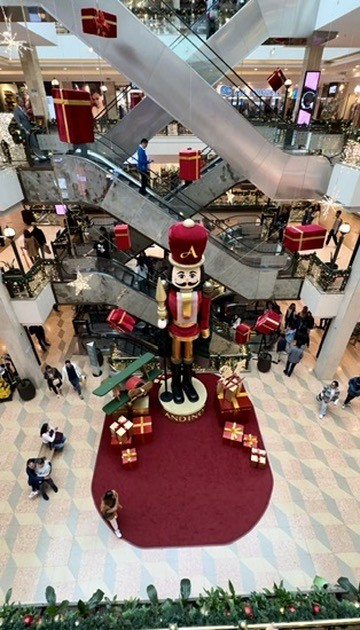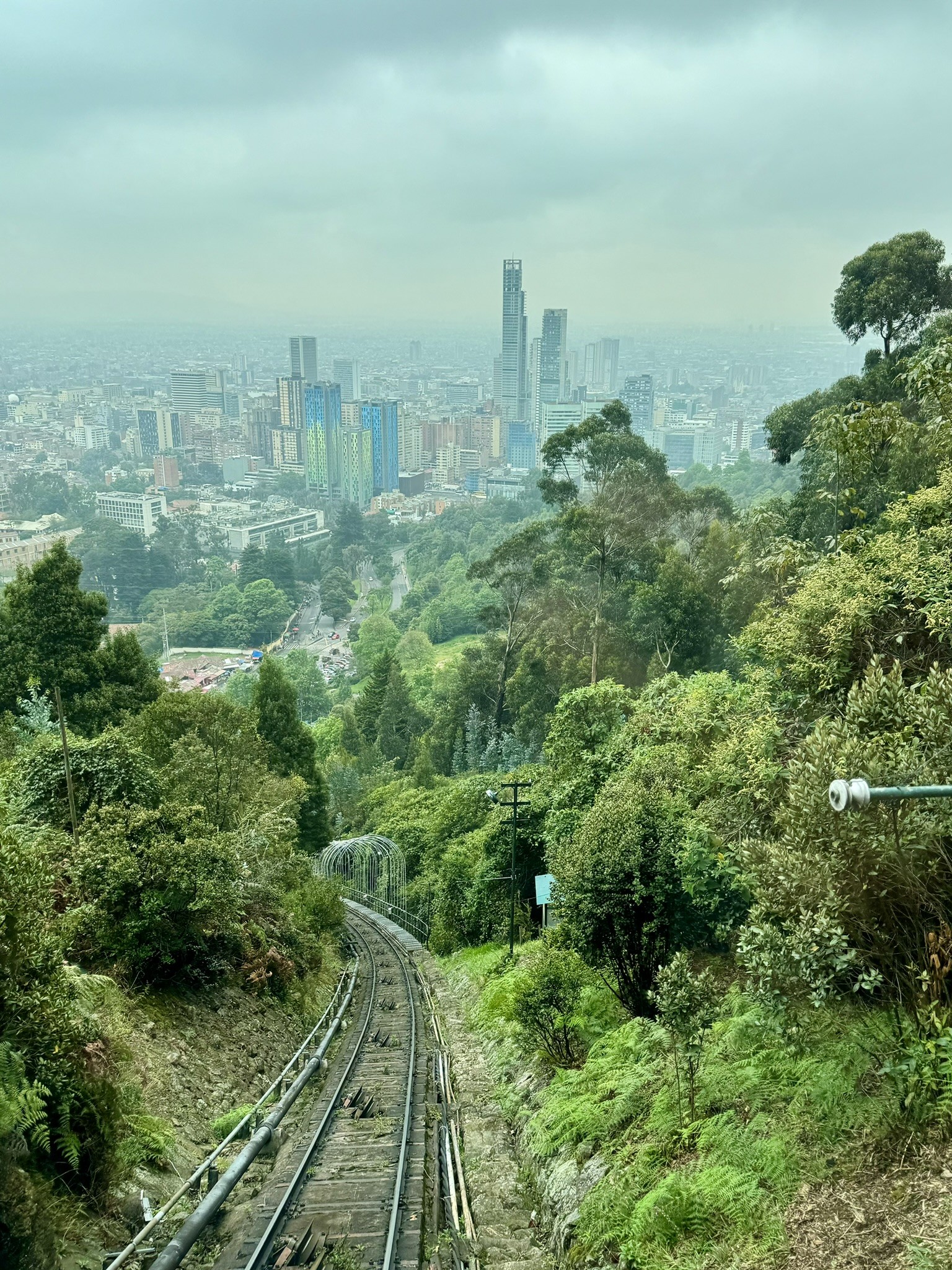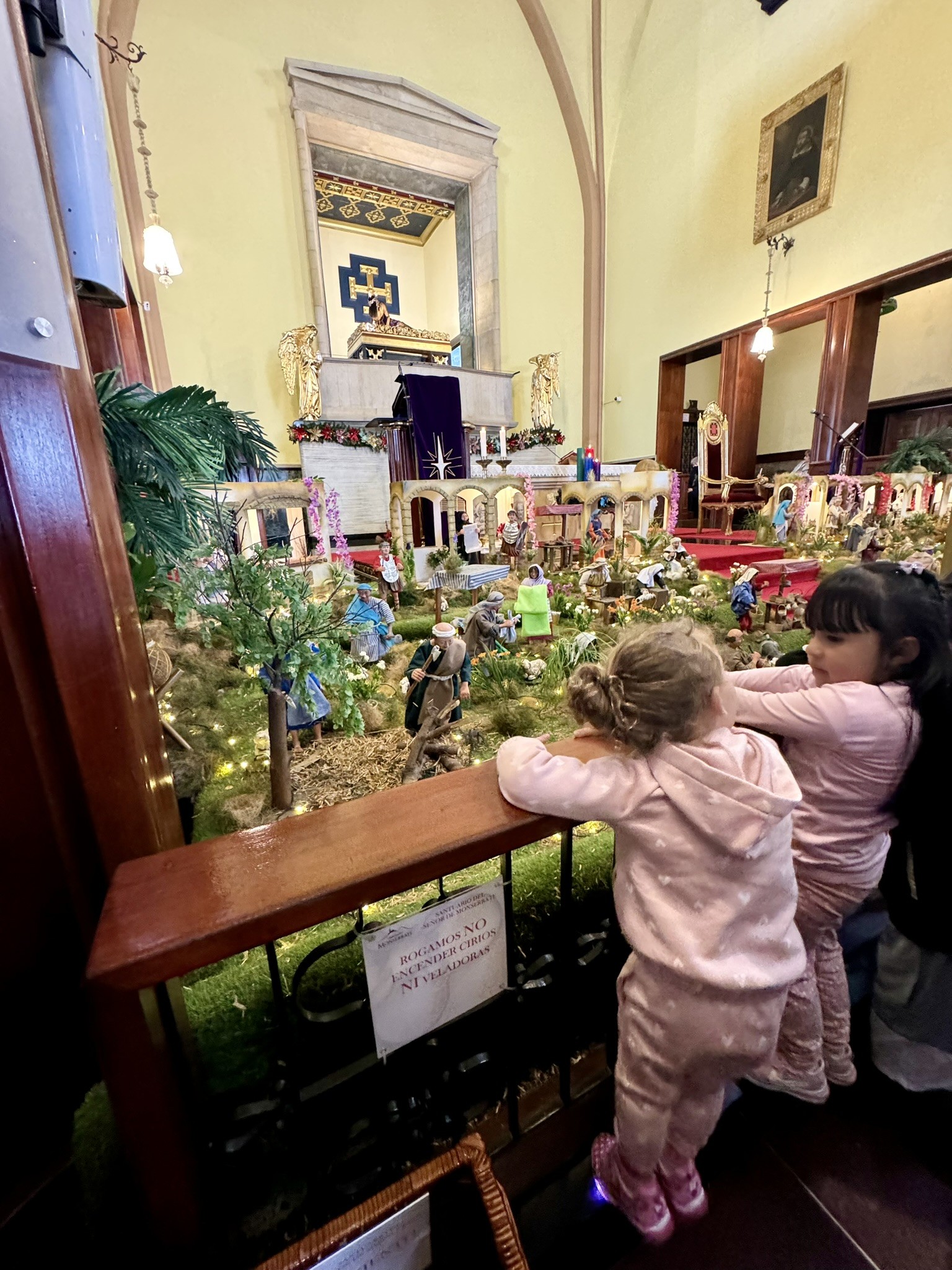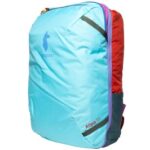Bogota safe to travel? Absolutely. This vibrant Colombian capital offers an unforgettable experience, blending rich history with modern culture. At TRAVELS.EDU.VN, we want to equip you with the knowledge to explore Bogota confidently. This guide highlights safe neighborhoods, activities, and essential precautions. Discover the allure of this Andean metropolis with our expert insights, ensuring a secure and rewarding journey. Bogota’s allure, cultural gems, and travel safety tips are all covered.
1. Current Safety Landscape in Bogota
Bogota is generally safe for travel. Like any major city, vigilance is essential. Travelers should exercise standard safety precautions, similar to those in New York or London. While Colombia’s past reputation might raise concerns, many visitors, including families, experience a secure and enjoyable trip. The key is to stay informed and take practical measures.
Petty theft and pickpocketing can occur, but these can be avoided with simple precautions. A common saying in Colombia is “no dar papaya,” meaning “don’t show your valuables.” Avoid displaying expensive jewelry, keep bags in front of you in crowded areas, and be discreet with your phone.
A strong police presence throughout Bogota, including security guards and K-9 units, adds an extra layer of reassurance. Look for “CAI” booths, police stations strategically placed around the city, offering readily available assistance.
2. Safe Neighborhoods to Explore in Bogota
Choosing the right neighborhood can significantly enhance your safety and enjoyment in Bogota. Generally, the northern part of the city is considered safer. Here’s a breakdown of recommended areas:
- Zona T / Zona Rosa: An upscale district with high-end shopping, restaurants, and nightlife. Known for its vibrant atmosphere and security.
- Usaquén: Another affluent area, offering a blend of colonial charm and modern amenities. Its weekend market is a popular attraction.
- Chapinero: A bohemian neighborhood with a thriving culinary scene, trendy cafes, and LGBTQ+-friendly venues.
- Teusaquillo: A financial district with abundant green spaces, parks, and historical architecture. Ideal for leisurely strolls.
- Candelaria: The historical and cultural heart of Bogota. While captivating, exercise extra caution at night due to higher foot traffic and occasional petty crime.
3. Must-Do Safe Activities in Bogota
Bogota offers a wealth of activities that are both safe and culturally enriching. Here are some recommendations:
3.1. Exploring La Candelaria
La Candelaria is the historical and cultural heart of Bogota, boasting stunning colonial architecture. Strolling through its streets feels like stepping back in time. However, be mindful of crowds and keep your belongings secure.
Visiting on a Sunday allows you to experience the vibrant atmosphere of locals enjoying the day. While pushing a stroller on cobblestone streets can be challenging, the area is generally safe with proper precautions.
3.2. Plaza Chorro de Quevedo
Plaza Chorro de Quevedo, the birthplace of Bogota, is a lively square where you can experience street performers, storytellers, and local artisans. Keep a close eye on your belongings and children due to the bustling environment. Enjoy the numerous cafes offering outdoor seating for people-watching.
3.3. Upscale Shopping at El Andino
For a taste of upscale Bogota, visit El Andino, a modern shopping mall with high-quality goods and international brands. Colombia is renowned for its fashion, and El Andino offers a secure and pleasant shopping experience. Malls are also a great way to observe local life and culture.
 Shopping in Colombia
Shopping in Colombia
3.4. Monserrate Sanctuary
Take a trip up Monserrate, offering breathtaking panoramic views of Bogota. The Sanctuary of Monserrate church is a popular destination. The funicular and gondola provide safe and convenient transportation. The well-trafficked hiking trail is also safe during daylight hours when other hikers are present.
 Bogota, Colombia Funicular
Bogota, Colombia Funicular
3.5. Religious Sites
Bogota is home to several stunning cathedrals, including the Cathedral Metropolitan Basilica of Bogotá in Plaza de Bolivar, Iglesia de San Francisco, and Our Lady of Candelaria. Churches provide a peaceful respite from the city’s hustle and bustle.
 Bogota, Colombia Churches
Bogota, Colombia Churches
3.6. Museums and Gardens
Explore Bogota’s rich cultural scene by visiting museums like the Botero Museum, Museo de Oro (Gold Museum), and the National Museum. Consider a visit to the Botanical Gardens for a relaxing nature experience.
3.7. Day Trips
Venture outside Bogota to explore nearby attractions such as the Catedral de Sal in Zipaquirá, La Chorrera Waterfall, Laguna de Guatavita (Lake Guatavita), and the colonial town of Villa de Leyva.
4. Safe Transportation Options in Bogota
Getting around Bogota safely requires careful planning. Here are some recommended transportation methods:
- Walking: Walking is generally safe during the day in upscale areas like Zona T, Zona Rosa, and El Andino. Stay vigilant in crowded areas like La Candelaria, Plaza Bolivar, and Plaza Chorro de Quevedo.
- Private Driver: Hiring a private driver is a comfortable and secure option. Arrange a “placa blanca” (basic white sedan) through your hotel. A driver can provide door-to-door service, ensuring your safety and convenience. TRAVELS.EDU.VN can help you arrange this service.
- Uber: Uber is a safer alternative to traditional taxis. It offers transparent pricing and ride tracking.
- Taxis: If you use taxis, always negotiate the price before getting in.
- TransMilenio: Public transportation via the TransMilenio bus system is available, but consider safety reviews before using it.
5. Altitude Considerations
Bogota’s high altitude of 8,660 feet (2,640 meters) can affect some travelers. It’s higher than Denver but lower than Quito, Cusco, and La Paz. Take it easy for the first day or two to acclimate. Avoid strenuous activities until you feel comfortable.
If you plan to hike Cerro Monserratte at 10,341 feet (3,152 meters), allow ample time to adjust to the altitude.
6. Natural Disaster Awareness
Earthquakes can occur occasionally in Bogota, but the risk of hurricanes and volcanic eruptions is low. Due to the altitude, mosquito-borne viruses like dengue, malaria, and yellow fever are not a significant concern in Bogota, unlike other parts of Colombia.
7. Political Unrest Precautions
Colombia has a complex political history, and protests are not uncommon. If you encounter a rally or march, it’s best to turn around and avoid the area. Civil unrest can turn violent, regardless of location.
While there is a risk of terrorism due to the country’s history with guerrilla groups, the threat is generally low in tourist areas. The US Department of State provides information on this conflict, but most incidents occur deep in the interior of Colombia.
8. Addressing Concerns about Cartels and Gangs
The events depicted in shows like Narcos occurred over 30 years ago. You generally don’t need to worry about cartels and gangs in the main tourist areas of Bogota. Even in Medellín, neighborhoods once known for narco-trafficking, like Comuna 13, have transformed into safer areas.
However, exercise caution and avoid getting involved in illegal activities like sex tourism or drug use.
9. Nightlife Safety Guidelines
Use heightened awareness in nightlife areas like La Candelaria or Parque 93 at night. Follow these guidelines:
- Avoid excessive alcohol consumption.
- Use the buddy system, especially if you are a solo female traveler.
- Use Uber instead of taxis.
- Don’t accept drinks from strangers; bottled beer is the safest option. Watch the bartender open it.
10. Why Travel to Bogota?
Bogota offers a vibrant and authentic cultural experience. Unlike more touristy destinations like Medellin and Cartagena, Bogota offers a glimpse into genuine Colombian life. The city’s blend of history, culture, and modernity makes it a unique and rewarding destination.
While Medellin, Cartagena, and Santa Marta are great choices for warm, sunny weather, Bogota offers a cooler, cloudier climate. The safety advice for these cities is similar to that for Bogota.
11. Travel Insurance Recommendations
It’s always wise to purchase travel insurance to protect against unforeseen circumstances like trip interruptions, lost luggage, and medical expenses. TRAVELS.EDU.VN recommends Wanderwell, SafetyWing, and World Nomads for reliable travel insurance options.
12. Group Travel Safety
Traveling in a group is often the safest way to explore a new destination. Group travel provides strength in numbers and the guidance of a local expert. Under30Experiences offers group trips to Colombia for young people ages 21-35, visiting Medellin, Cartagena, Santa Marta, and Tayrona National Park.
13. TRAVELS.EDU.VN: Your Partner for a Safe and Memorable Trip
At TRAVELS.EDU.VN, we are committed to providing you with a safe and unforgettable travel experience. We offer personalized travel planning services, expert advice, and on-the-ground support.
Why choose TRAVELS.EDU.VN for your Bogota adventure?
- Expert Local Knowledge: We have extensive knowledge of Bogota and can recommend the safest and most exciting activities.
- Personalized Itineraries: We tailor your trip to your interests and preferences, ensuring a unique and memorable experience.
- Reliable Transportation: We arrange secure transportation options, including private drivers and airport transfers.
- 24/7 Support: We provide round-the-clock support to address any concerns or emergencies that may arise.
Ready to explore Bogota with confidence? Contact TRAVELS.EDU.VN today for a free consultation. Let us help you plan the perfect trip!
Contact Information:
- Address: 123 Main St, Napa, CA 94559, United States
- WhatsApp: +1 (707) 257-5400
- Website: travels.edu.vn
FAQ: Is Bogota Safe to Travel?
1. Is Bogota safe for solo female travelers?
Yes, Bogota can be safe for solo female travelers, but it’s crucial to take precautions. Avoid walking alone at night, especially in less crowded areas. Use ride-sharing apps like Uber instead of taxis, and always let someone know your whereabouts. Stay in well-lit and populated areas, and be mindful of your belongings to avoid petty theft.
2. What are the common safety concerns in Bogota?
The most common safety concerns in Bogota include petty theft, pickpocketing, and muggings. These incidents often occur in crowded tourist areas. To mitigate these risks, avoid displaying expensive jewelry or electronics, keep your bags close to your body, and be aware of your surroundings at all times.
3. Which areas of Bogota should I avoid?
While Bogota is generally safe, some areas are best avoided, especially at night. The southern parts of the city are known to be less safe. Additionally, be cautious in poorly lit or deserted streets. Always stick to well-traveled and well-lit paths, particularly when exploring at night.
4. How safe is public transportation in Bogota?
Public transportation in Bogota, particularly the TransMilenio bus system, has mixed safety reviews. During peak hours, it can be crowded, increasing the risk of pickpocketing. If you choose to use public transportation, be extra vigilant with your belongings and avoid traveling alone late at night.
5. Is it safe to drink tap water in Bogota?
Generally, tap water in Bogota is considered safe to drink, but it’s advisable to exercise caution. Many locals and tourists prefer to drink bottled water to avoid any potential stomach issues. If you have a sensitive stomach, sticking to bottled water is the safest option.
6. Are there any health precautions I should take in Bogota?
Due to Bogota’s high altitude, it’s essential to take precautions to avoid altitude sickness. Arrive a few days early to acclimate, stay hydrated, and avoid strenuous activities upon arrival. Consult your doctor about medications for altitude sickness if you have pre-existing health conditions.
7. How do I handle police interactions in Bogota?
Police interactions in Bogota are generally professional, but it’s helpful to be prepared. Keep a copy of your passport and visa readily available. If stopped by the police, remain calm and polite. If you feel you’ve been treated unfairly, note the officer’s name and badge number, and report the incident to your embassy.
8. What should I do in case of an emergency in Bogota?
In case of an emergency in Bogota, dial 123 for police, fire, or ambulance services. Keep your embassy’s contact information handy, and know the location of the nearest hospital. Familiarize yourself with basic Spanish phrases to communicate effectively with local authorities.
9. Is it safe to use ATMs in Bogota?
Using ATMs in Bogota requires caution. Opt for ATMs located inside banks or secure shopping centers rather than standalone ATMs on the street. Be discreet when withdrawing money, and shield the keypad to prevent onlookers from seeing your PIN. Avoid using ATMs at night.
10. What cultural customs should I be aware of in Bogota to ensure my safety?
Being aware of local customs can enhance your safety and overall experience in Bogota. Colombians are generally friendly and respectful. Dress modestly, especially when visiting religious sites. Avoid discussing sensitive political topics, and be mindful of noise levels in residential areas. Respect local traditions and customs to foster positive interactions.
